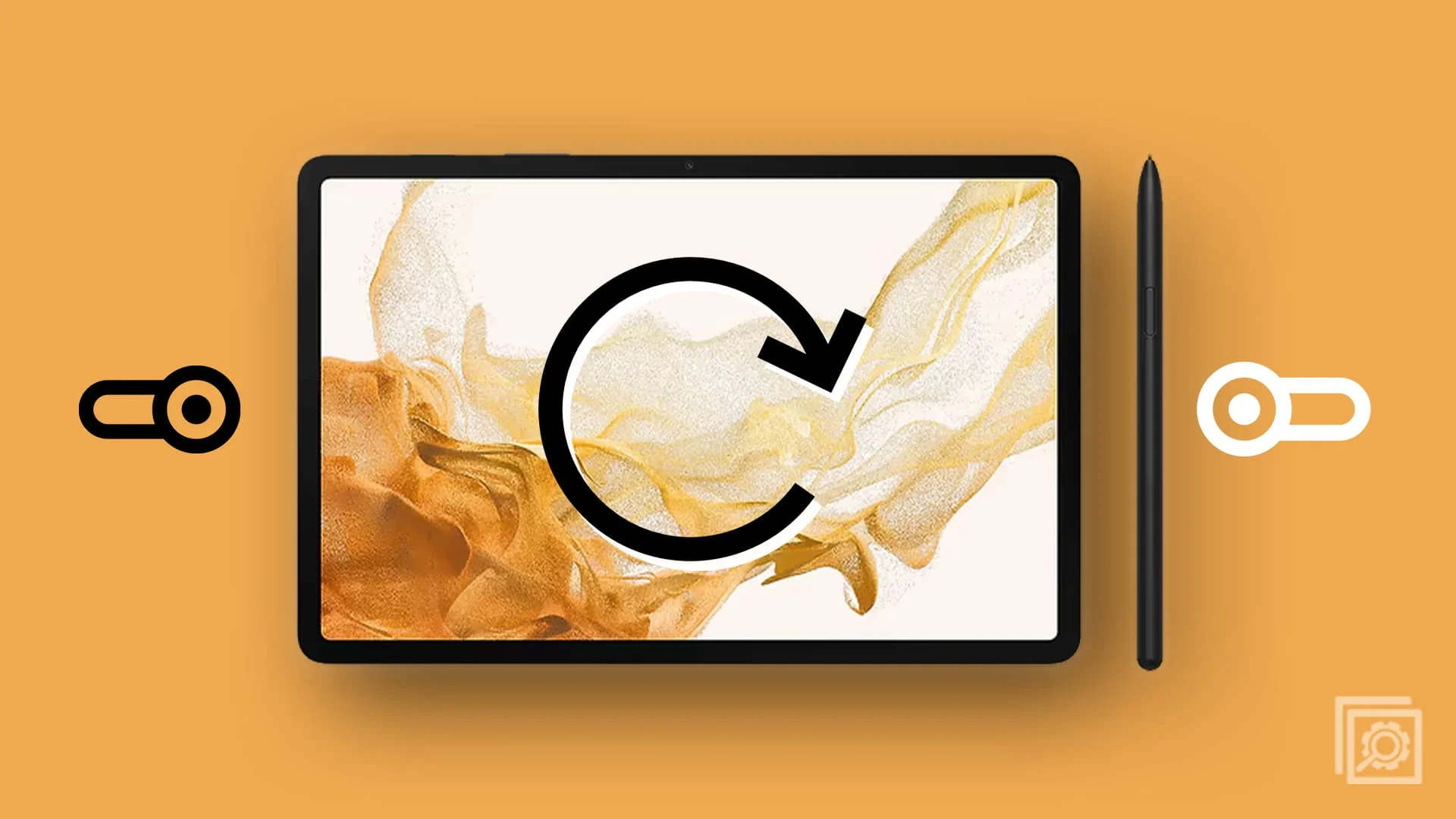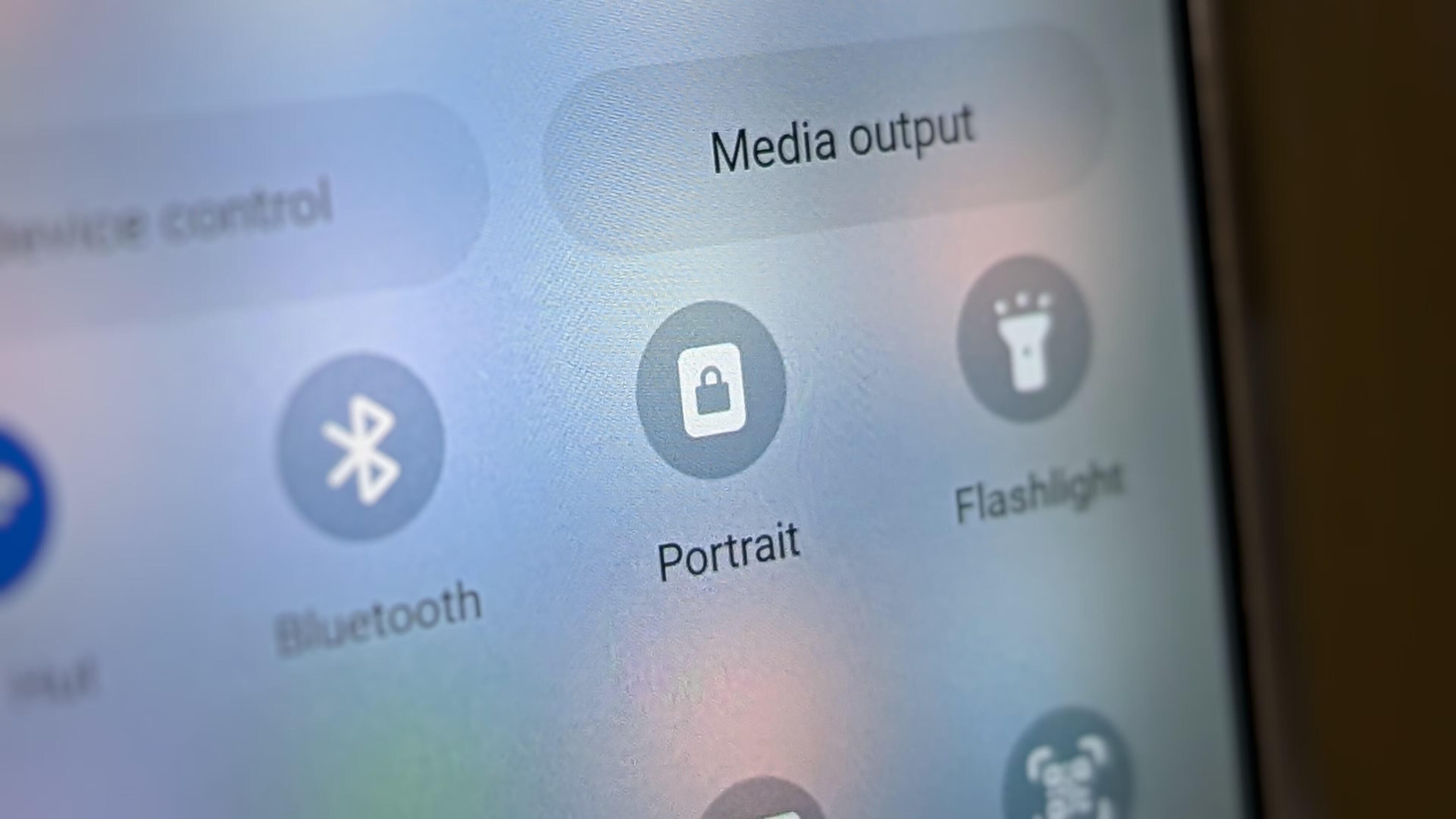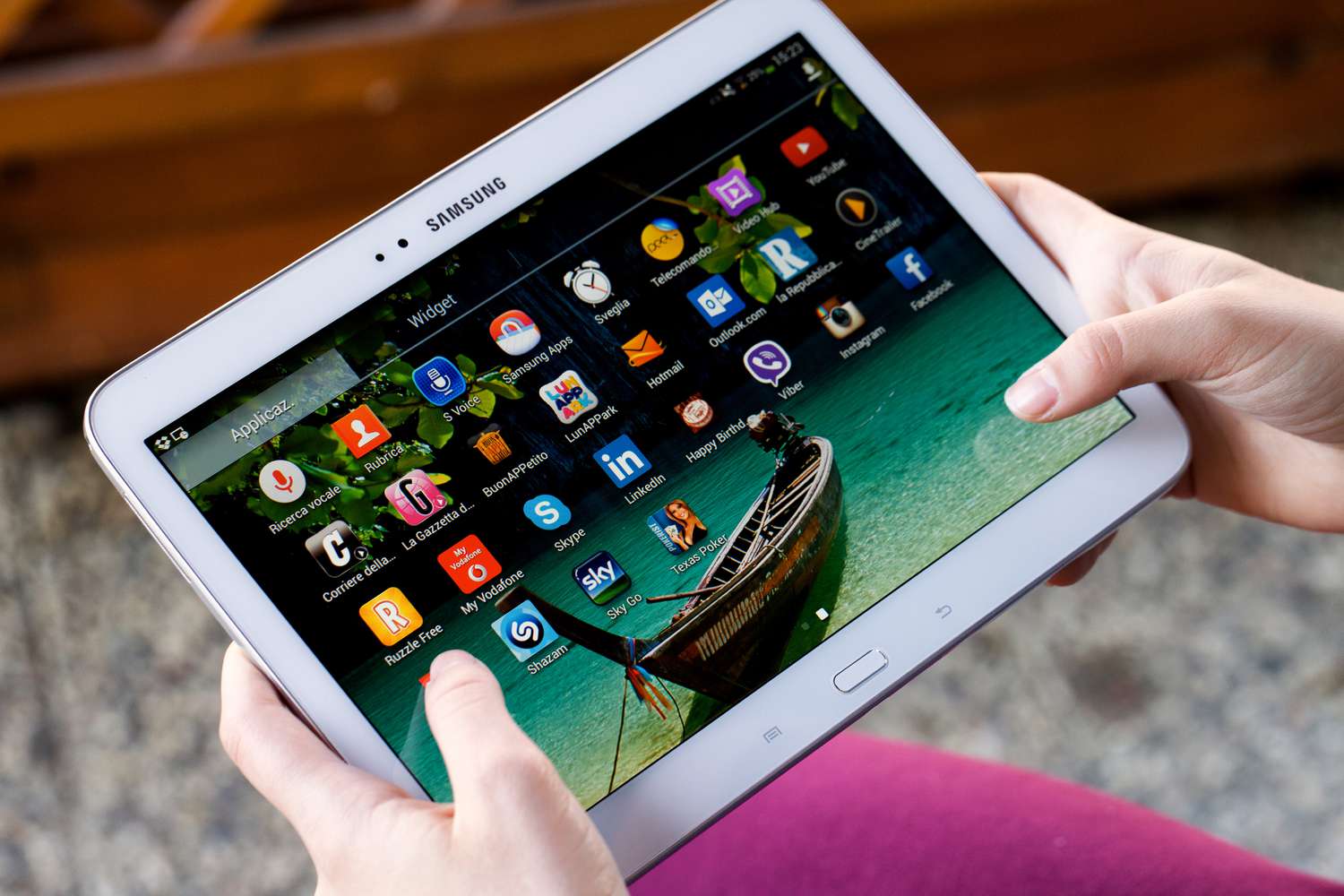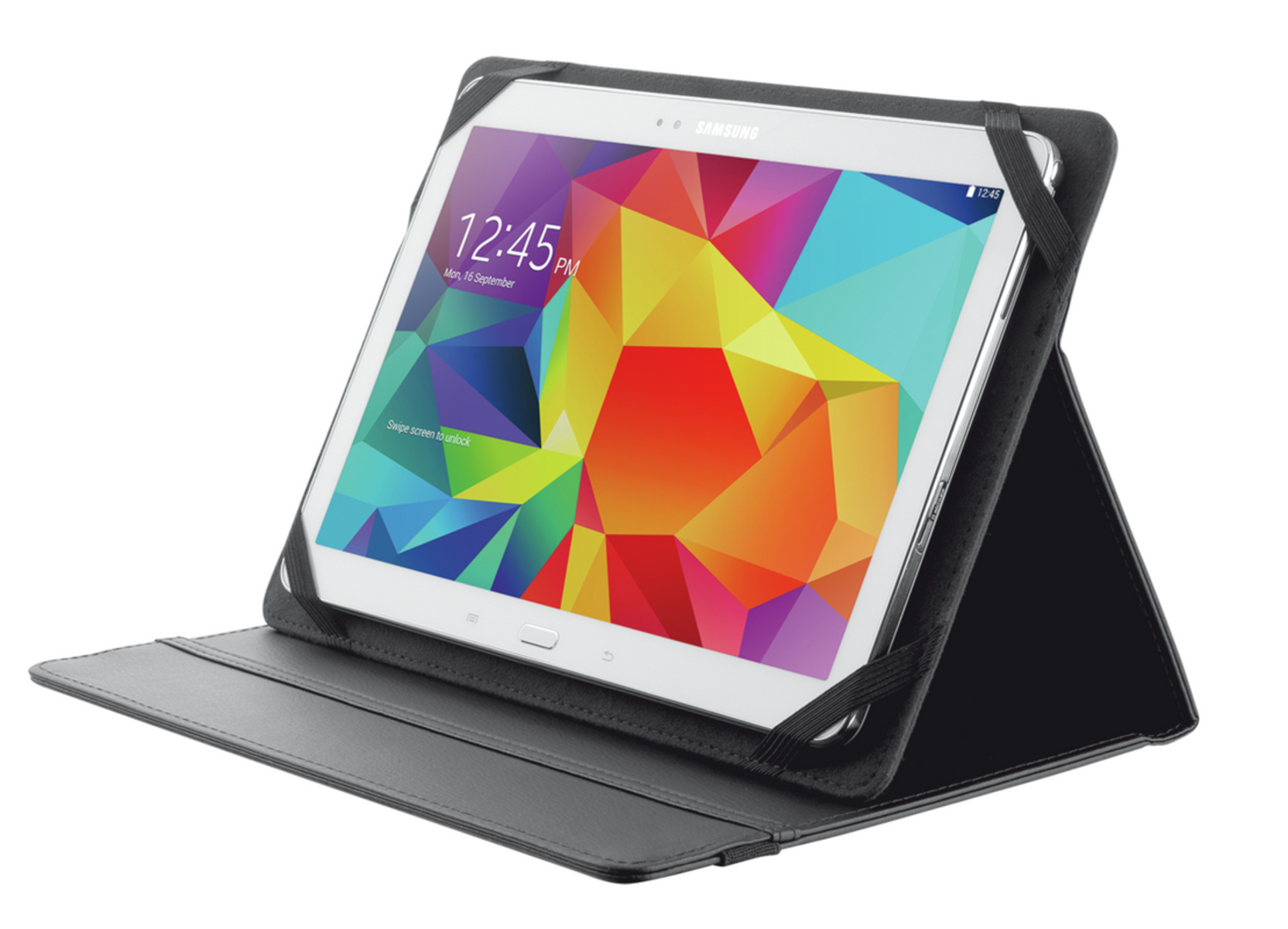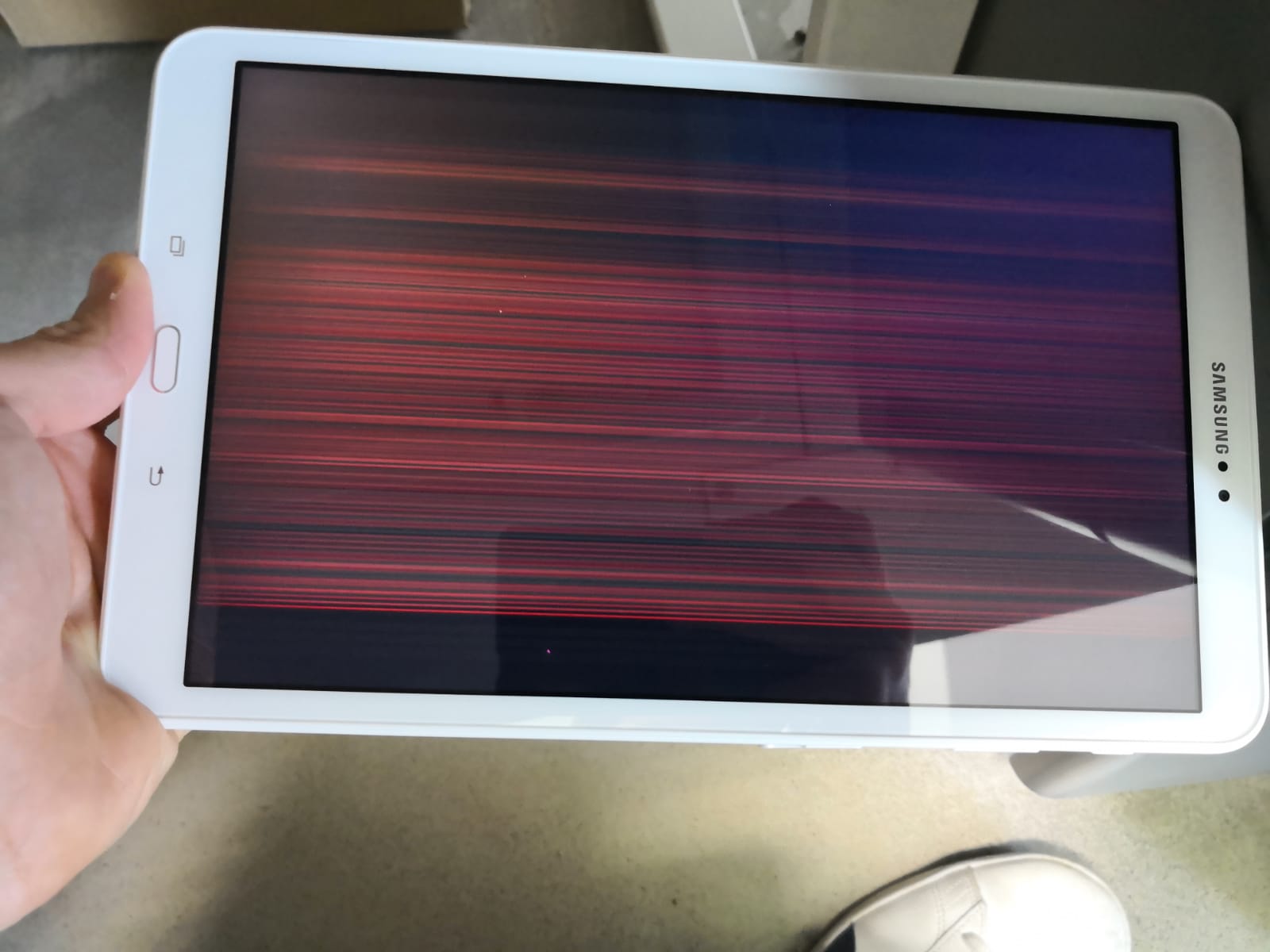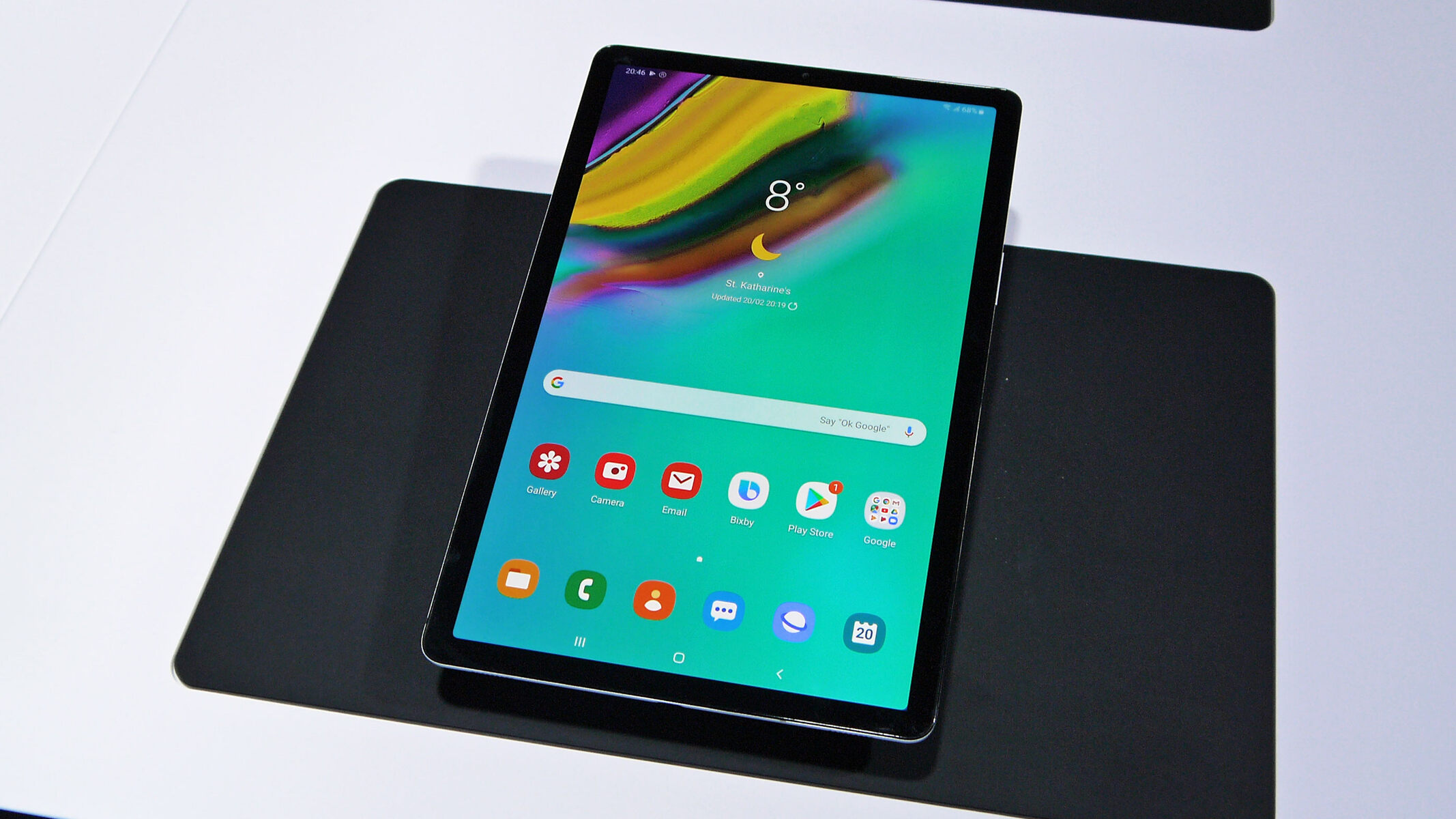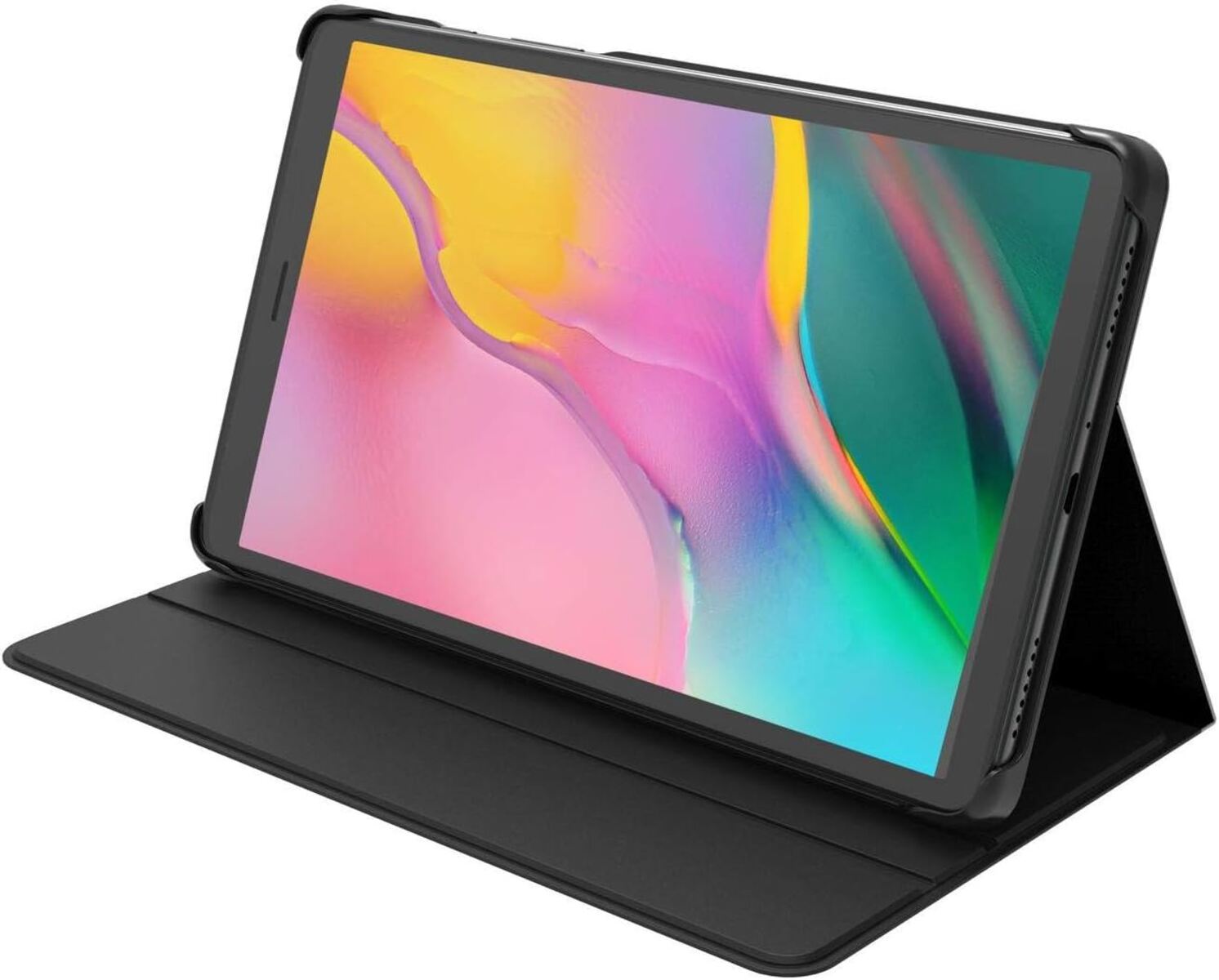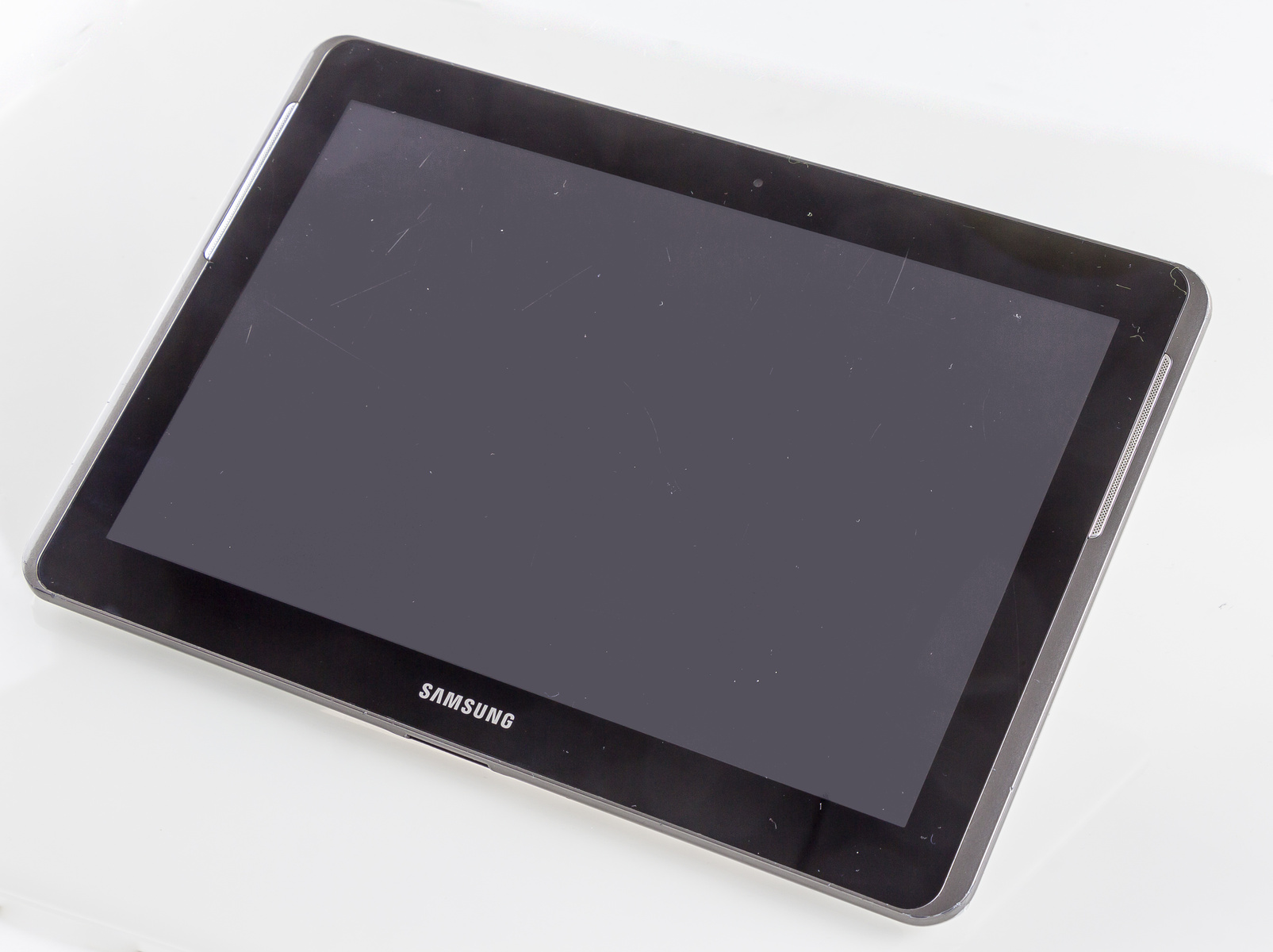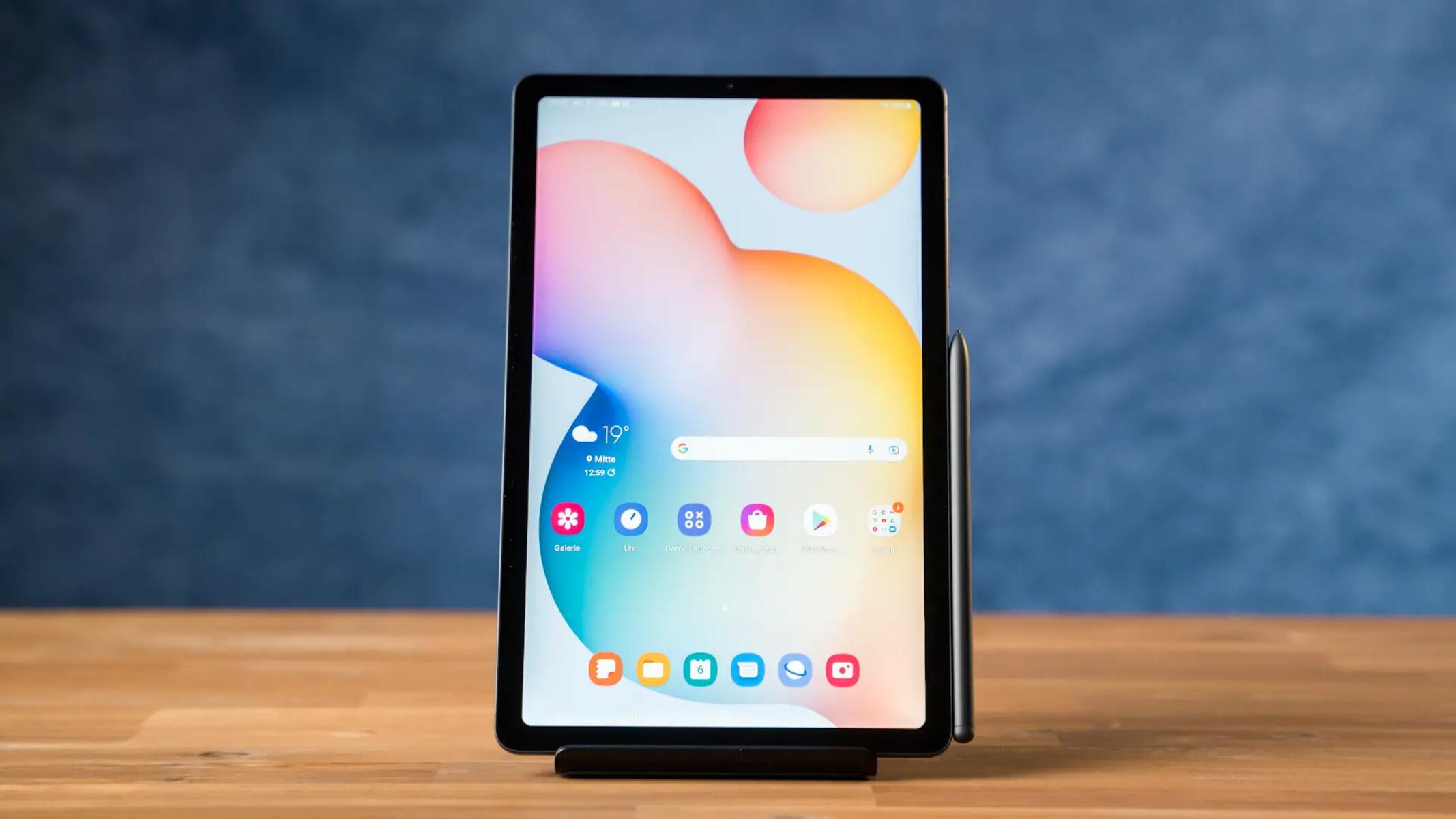Introduction
Welcome to our guide on how to rotate the screen on your Samsung tablet. Whether you want to switch from portrait to landscape mode or vice versa, changing the screen orientation can greatly enhance your tablet experience. With a few simple steps, you can effortlessly rotate the display to view content in the orientation that suits you best.
Having the ability to rotate the screen on your Samsung tablet offers increased flexibility and convenience, especially when watching videos, browsing the internet, or playing games. By adjusting the screen orientation, you can optimize your viewing experience, making it more comfortable and enjoyable.
In this article, we will explore various methods to rotate the screen on your Samsung tablet. From using the accelerometer, accessing the notification panel, adjusting display settings, to utilizing the quick settings panel and third-party apps, we will cover everything you need to know to easily rotate the screen orientation on your device.
Each method has its own advantages and can be accessed from different areas of your tablet interface. Whether you prefer a quick and straightforward approach or want to explore additional customization options, we’ve got you covered. So, let’s dive right in and discover the different methods to rotate the screen on your Samsung tablet.
Method 1: Using the Accelerometer
One of the easiest and most intuitive ways to rotate the screen on your Samsung tablet is by using the built-in accelerometer. The accelerometer is a sensor that detects the orientation of your device, allowing it to automatically adjust the screen orientation accordingly.
To use the accelerometer to rotate the screen, follow these simple steps:
- Hold your Samsung tablet in the desired orientation.
- Wait a few seconds for the accelerometer to detect the new orientation.
- The screen will automatically rotate to match the tablet’s orientation.
Using the accelerometer provides a seamless and effortless way to rotate the screen on your Samsung tablet. Whether you want to switch between portrait and landscape mode while browsing the web or watching videos, the accelerometer ensures that the screen always aligns with your device’s position.
This method is particularly useful when you regularly change the orientation of your tablet based on your activity or preference. The accelerometer feature is designed to enhance your user experience, making it more convenient and intuitive.
It’s important to note that the accelerometer may be affected by certain conditions and may not always respond immediately. If you find that the screen is not rotating as expected, ensure that the auto-rotate option is enabled in your tablet’s settings.
Now that you know how to use the accelerometer to rotate the screen on your Samsung tablet, let’s explore another method that allows you to easily access the screen rotation settings via the notification panel.
Method 2: Using the Notification Panel
Another convenient way to rotate the screen on your Samsung tablet is by using the notification panel. The notification panel provides quick access to various settings and features, including the option to adjust the screen rotation.
Here’s how you can use the notification panel to rotate your tablet’s screen:
- Swipe down from the top of the screen to open the notification panel.
- Look for the “Screen rotation” or “Auto rotate” icon. It usually appears as a circular arrow or a padlock with an arrow surrounding it.
- Tap on the screen rotation icon to enable or disable auto rotation.
- If the screen rotation icon is grayed out, it means that the auto rotation feature is currently disabled.
- Once you tap on the icon, the screen rotation will be adjusted accordingly.
Using the notification panel is a quick and easy way to toggle the auto rotation feature on your Samsung tablet. Whether you want to enable or disable auto rotation, accessing the screen rotation option through the notification panel allows for immediate control over the orientation of your device’s screen.
By disabling auto rotation, you can lock your tablet’s screen in the current orientation, which can be useful in scenarios where you want to prevent the screen from changing orientation accidentally.
Keep in mind that if you disable auto rotation, you will have to manually adjust the screen orientation by using other methods if you wish to view content in landscape or portrait mode.
Now that you know how to use the notification panel to rotate the screen on your Samsung tablet, let’s explore another method that involves accessing the display settings.
Method 3: Using the Display Settings
If you prefer a more comprehensive approach to adjusting the screen rotation on your Samsung tablet, you can utilize the display settings. This method allows for detailed customization and control over how your device handles screen orientation.
Follow these steps to use the display settings to rotate the screen on your Samsung tablet:
- Go to the Settings menu on your tablet. You can access it by swiping down from the top of the screen and tapping on the gear icon or by locating the Settings app in your app drawer.
- Scroll down and tap on the “Display” option.
- Look for the “Screen rotation” or “Auto rotate” option. The exact name may vary depending on your tablet’s model and Android version.
- Tap on the screen rotation option to enable or disable auto rotation.
- If desired, you can also find additional options related to screen rotation settings, such as “Portrait mode only” or “Auto-rotate screen for certain apps.”
- Adjust the settings to your preferred configuration.
Using the display settings allows for more flexibility in customizing the screen rotation behavior on your Samsung tablet. You can enable or disable auto rotation, restrict rotation to portrait mode only, or even set specific apps to auto-rotate.
This method is particularly useful when you want fine-grained control over how your tablet handles screen orientation. It ensures that your tablet adapts to your preferences, whether you prefer a fixed portrait mode or need the flexibility of auto rotation for certain apps.
Explore the various display settings to determine the configuration that best suits your needs and enhances your tablet experience.
Now that you know how to use the display settings to adjust the screen rotation on your Samsung tablet, let’s move on to another method that involves utilizing the quick settings panel.
Method 4: Using the Quick Settings Panel
If you’re looking for a convenient and fast way to toggle the screen rotation on your Samsung tablet, utilizing the quick settings panel is a great option. The quick settings panel provides easy access to commonly used settings, including screen rotation.
Follow these steps to rotate the screen using the quick settings panel on your Samsung tablet:
- Swipe down from the top of the screen with two fingers to open the quick settings panel. Alternatively, you can swipe down once and then swipe down again on the small arrow icon.
- Look for the “Screen rotation” or “Auto rotate” icon in the quick settings panel. It is usually represented by a circular arrow or a padlock with an arrow surrounding it.
- Tap on the screen rotation icon to enable or disable auto rotation.
- Once you tap on the icon, the screen rotation will be adjusted accordingly.
Using the quick settings panel makes it incredibly convenient to toggle the screen rotation feature on your Samsung tablet. With just a couple of quick taps, you can switch between auto rotation and fixed orientation settings.
This method is particularly useful when you frequently need to adjust the screen rotation while using your tablet. It provides a hassle-free way to switch between landscape and portrait mode, depending on your current activity or preference.
Remember that changing the screen rotation using the quick settings panel will only affect the current session. If you want to make permanent changes to the screen rotation settings, you may need to access the display settings, as discussed in the previous method.
Now that you know how to utilize the quick settings panel to rotate the screen on your Samsung tablet, let’s explore another option that involves using third-party apps.
Method 5: Using Third-Party Apps
If you’re looking for additional features and customization options beyond what the built-in settings offer, using third-party apps can be a viable solution to rotate the screen on your Samsung tablet. There are several apps available on the Google Play Store that provide advanced screen rotation functionality.
Here’s how you can use third-party apps to rotate the screen on your Samsung tablet:
- Open the Google Play Store on your tablet.
- Search for “screen rotation” or “screen orientation” apps.
- Browse through the available options and read reviews to find a reliable and highly-rated app.
- Tap on the app you wish to install, then tap “Install” and follow the on-screen instructions.
- Once the app is installed, open it and explore the various screen rotation settings and customization options.
- Configure the app according to your preferences and adjust the screen rotation using the app’s features.
Using third-party apps can provide you with more advanced control over screen rotation on your Samsung tablet. These apps often offer additional features like per-app rotation settings, rotation lock reminders, and more.
Before installing a third-party app, make sure to read the app’s reviews and check its compatibility with your tablet model and Android version. Additionally, be cautious of apps that may contain intrusive ads or compromise your device’s security.
By using third-party apps, you can tailor the screen rotation experience to your specific needs and preferences beyond what the built-in settings provide.
Now that you know how to use third-party apps to rotate the screen on your Samsung tablet, you have explored all the methods available to adjust the screen orientation on your device.
Conclusion
Rotating the screen on your Samsung tablet is a simple yet essential feature that enhances your viewing experience and allows you to customize your device to suit your preferences. Whether you want to switch between portrait and landscape mode for watching videos, reading ebooks, or browsing the web, there are various methods available to rotate the screen on your tablet.
In this guide, we have explored five different methods to rotate the screen on your Samsung tablet:
- Using the accelerometer: The built-in sensor detects the device’s orientation and automatically adjusts the screen rotation accordingly.
- Using the notification panel: Accessing the screen rotation option through the notification panel allows for quick toggling of auto rotation.
- Using the display settings: This method provides more comprehensive customization options for fine-tuning the screen rotation behavior.
- Using the quick settings panel: The quick settings panel enables you to easily toggle the screen rotation with just a couple of taps.
- Using third-party apps: If you require advanced features and customization options, third-party apps can provide more flexibility for screen rotation.
Each method offers its own advantages and can be used depending on your specific needs and preferences. Whether you prefer a quick and intuitive approach or desire more control over screen rotation settings, there is a method that suits your requirements.
Remember to experiment with different methods to find the one that works best for you. It’s also essential to ensure that the auto rotation option is enabled in your tablet’s settings if you want the screen to adjust automatically.
No matter which method you choose, being able to rotate the screen on your Samsung tablet allows for a more enjoyable and customizable user experience. So go ahead and explore the different methods to find your preferred screen orientation for various activities on your tablet.
Thank you for reading this guide, and we hope that it has helped you in successfully rotating the screen on your Samsung tablet!







